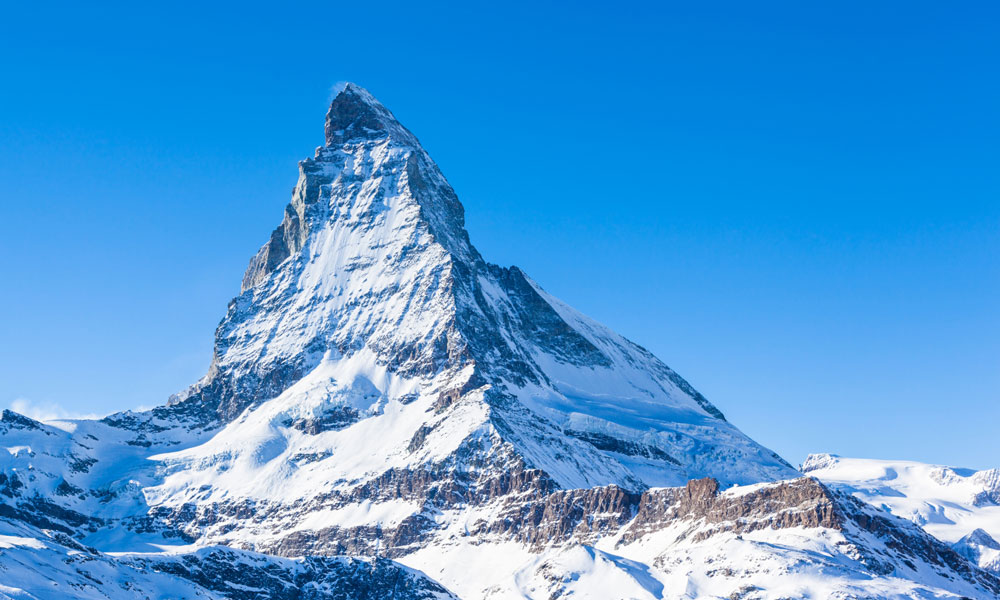
The Groups Fixing the Matterhorn’s Overcrowding Problem
As the epic Alpine mountain that straddles Switzerland and Italy celebrates a notable anniversary, local associations around the Matterhorn are working to ensure that the mountain remains environmentally sound and that climbers are safe. The strategy? Limit the number of people who can climb at a given time.
On July 14, 1865—150 years ago today—Briton Edward Whymper became the first person to reach the top of the Matterhorn from Switzerland. It’s a feat that’s been accomplished thousands of times since, though hundreds of climbers have died attempting to reach the summit—including four of Whymper’s crew members.
But being in such a remote spot, the 14,692-foot mountain—the crown jewel of the Swiss Alps—runs into plenty of practical issues that have caused it problems in recent years, such as pollution and safety.
To put it another way, the Matterhorn is a victim of its own success.
Key groups around the mountain region are working to help ease these issues. As The New York Times reports, the Zermatt Mountain Guides Association (ZMGA) and Burgergemeinde Zermatt, two local associations that represent the local mountain-climbing economy, have taken strides to improve the situation. Among the things they’re doing:
Renovating the hut: The Hörnli hut, a base-camp shelter at the foot of the Matterhorn, has been upgraded significantly and now relies on solar power and an eco-friendly waste disposal method. The renovation, which took place over a two-year period, cost around $9 million to build.
Encouraging the use of guides: In recent years, the number of deaths due to accidents on the Matterhorn has gone down significantly, in part because climbers are using guides more frequently. The Swiss paper The Local reported that in 2013, just one in five people climbing the mountain did so without the help of a guide—a significant decrease from the two decades prior.
Limiting foot traffic: Crowds are considered a significant danger on the mountain, and to limit the impact large groups of people might have on safety and the mountain’s integrity, the Hörnli hut will have just 130 beds—40 fewer than previously allowed. In addition, camping will no longer be allowed on the grounds of Hörnli. The result is that the base camp will artificially limit the number of people who can make the climb on a given day.
This, says ZMGA head Benedikt Perren, will help improve the experience for thrill-seekers in the busy part of the year and will ensure that those taking the treacherous journey are safe.
“I think this famous mountain, it has to be regulated. With less people, everything is better,” Perren told the Times. “It’s safer. People have a better experience. It’s better for the guides, and it’s better for the mountain.”
(iStock/Thinkstock)






Comments